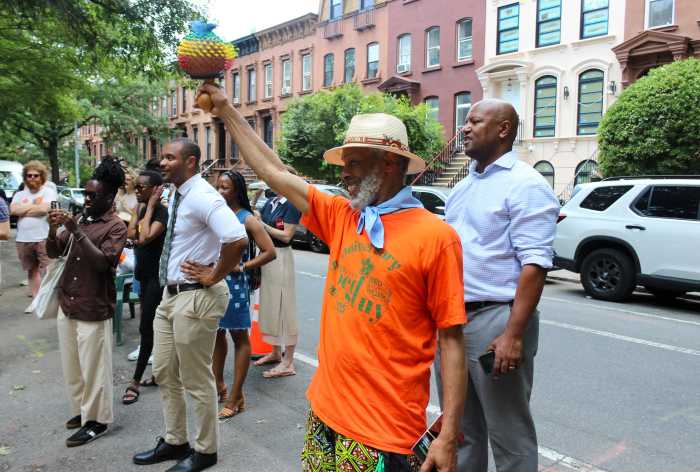There’s plenty of indication in and around the Gowanus Canal that designating the fetid waterway a Superfund site will have little impact on the ability to secure a mortgage, the Environmental Protection Agency insisted this week.
The area’s reputation has already been established — and not necessarily in a good way.
Concern over future financing is one of the reasons critics have blasted the plan, which they fear would slap a stigma on the entire region — not just on the former industrial waterway — freezing new development and growth in the area for decades.
But Christos Tsiamis, the EPA’s remedial project manager for the canal, said preexisting conditions in the area already put up red flags to lenders— but don’t necessarily exclude the possibility of winning a loan. “What we are trying to say is that Superfund does not change that,” he said.
He pointed to a Department of Housing and Urban Development document that spells out what lenders “must avoid or mitigate” if a range of conditions exist, before completing their loan review. Among the conditions are “potential noise issues, where the property is located within 1,000 feet of a highway, freeway, or heavily traveled road, within 3000 feet of a railroad, or within one mile of an airport or five miles of a military airfield.” Tsiamis noted that the canal is already within 3,000 feet of a railroad and 1,000 feet from a highway.
Whether a site is on an Superfund list or equivalent state list, also makes the list, as does an assessment indicating the presence of if contaminants.
“All the other conditions that they list as possible things that lenders would have to avoid or determine if mitigants are in place — they are already there,” said Elizabeth Totman, an EPA spokesperson, noting that upland sites where residential buildings are contemplated are already home to contaminants. “The proximity of a Superfund site to a condo would not prevent a loan from being made.”
Tsiamis recently met with a handful of members from the Brooklyn preservation Council, a group that supports the city’s alternative plan for the cleanup. He said there was no agenda for the small meeting, held on Jan. 26. “We have to meet with variety of different community members, and we met with the Brooklyn Preservation Council just to inform them what was going on,” he said.
Community activist Salvatore “Buddy” Scotto said he left the meeting feeling less than enthusiastic. “It’s clear that if the designation goes through, it will be at least as difficult to get mortgage money, and for most of the people there, impossible. Suddenly, the value of their buildings goes down to nothing.”
Scotto, the founder of the Carroll Gardens Association, an affordable housing developer, said the EPA seems to think Superfund will make “no difference” at all. “I find that ridiculous,” he said. You designate this thing a Love Canal, and you think that’s going to help?”
Bob Furman, a Manhattan resident who is a founding member of the preservation council, said the EPA is less concerned with development than it is with cleaning the canal.His hope is “finding a way to get the canal cleaned without turning off the developers.”
But David Von Spreckelsen, a senior vice president at Toll Brothers is already turned off.At a separate meeting last week, his company, which is planning hundreds of new units along the canal’s edge met for the first time privately with EPA officials. “I told them that we would not go forward if the canal were listed,” he said, reiterating what he has previously said publicly. “It was the first time we actually spoke with EPA. There were no uncertain terms,” he added.
Toll’s site, bounded by Bond Street, Canal Street, Second Street and the canal, will need remediation in order for residential construction to proceed, but the land does not approach the level and array of contaminants lurking in the 1.8-mile waterway.
Tsiamis said there’s no reason Toll shouldn’t move ahead with its plans.“We’re not antagonistic to anyone,” he said. “They can proceed — any issue they have [would] have more to do with contamination on their parcel than anything in the canal.”
The EPA has yet to decide whether the canal should be included in the Superfund program, which compels those who polluted a toxic site to pay for its cleanup.






















